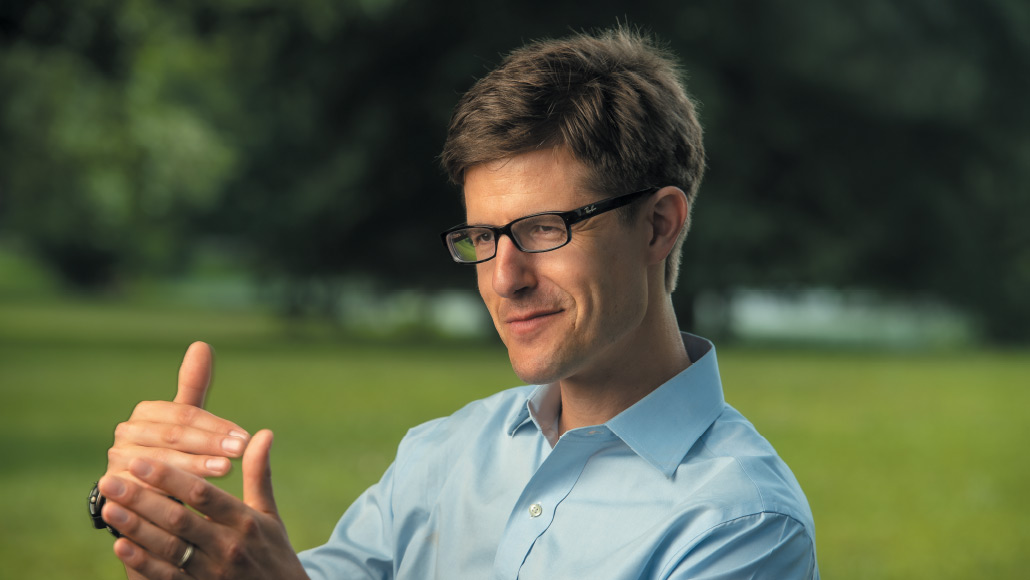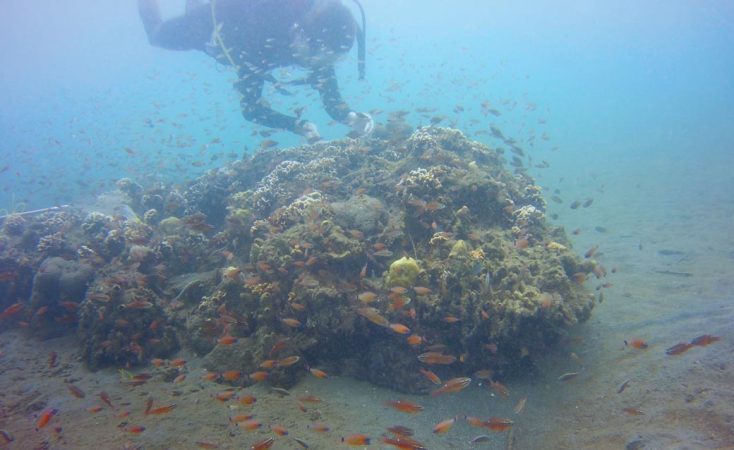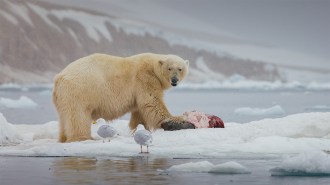Malin Pinsky seeks to explain how climate change alters ocean life
His data on fish and other species might hold the answers to future marine health

Marine ecologist Malin Pinsky examines how warming ocean waters, overfishing and habitat destruction can drive changes in fish populations.
Jeff Heckman, Courtesy of Rutgers Univ.
- More than 2 years ago
Malin Pinsky had the first of two lightbulb moments while standing on the bridge of a research ship crossing the churning Drake Passage, which separates the tip of South America and Antarctica. It was 2003, and Pinsky was five months out of his undergraduate studies in biology and environmental science. He was scanning the sky for seabirds, part of his duties as a research technician on the cruise. But his eyes kept straying to the vast, mysterious ocean below, slate blue in every direction.
As the ship entered the nutrient-rich Antarctic waters, the water temperature gauges on the bridge abruptly dropped. The ship was suddenly surrounded by whales. “It was stunning,” says Pinsky, 38, now a marine ecologist at Rutgers University in New Brunswick, N.J. “That moment helped me realize that, yes, the ocean looks featureless from the top, but there’s so much going on underneath.”
His second lightbulb moment came several months later, in a far less captivating locale. Pinsky, an intern for the Washington, D.C.–based conservation group Oceana, was making photocopies. A lot of photocopies.
It was about the time that two big reports on what policies might best preserve U.S. ocean resources came out, he says. “And I realized, wait a minute. We have all these laws and policies that determine how we as a society interact with the ocean, and they’re far out of date compared with where the science is. And yet, we don’t yet have the science to know what the new policy should be.”
Now, the sprawling, busy Pinsky Lab — a cast of about 20, including postdocs, graduate students and undergraduates — leads the charge to collect the data needed to shape thoughtful ocean policy amid global temperature rise. “The overarching focus of the lab is to understand how marine ecosystems are changing, why they are changing and what choices we can make as a society to alter that course,” Pinsky says.
One research area in particular garnered significant media attention over the last year: how warming ocean waters are reducing the sustainable catch of many different fish species around the globe. And his team’s work was incorporated into a high-profile international report suggesting that nearly 1 million species, including many fish, are currently threatened with extinction, in part because of human activities.
Pinsky’s team is also seeking to understand exactly how a changing climate, as well as overfishing and habitat destruction, might be driving changes in fish and other marine populations. For this, team members travel each year to coral reefs near the Philippines to catalog populations of clown fish, collecting data on growth and mating, sex diversity and other factors. A staggering number of factors could affect clown fish populations, in fact; in a team meeting, a whiteboard of ideas to pursue looks like a mash-up between a flowchart and a crazy quilt.

Another focus is whether recent climate change is leading to rapid genetic changes among Atlantic cod and other marine fishes and resulting in, for instance, fish maturing at younger ages. We generally think of evolution happening over millennia, Pinsky says. “And yet there’s plenty of evidence out there now that actually it can happen really quickly, when populations are pushed really hard.”
Pinsky’s rigorous, data-driven approach to studying how well species can tolerate temperature changes is “incredibly important at this point in time,” says Kimberly Oremus, a fisheries economist at the University of Delaware in Newark. Pinsky’s holistic approach to the problem — looking at species, their habitats and resource management — is setting the pace for other researchers, Oremus adds. “He’s pushing the whole field to respond to his growing body of research.”
Looking for the big picture has always been a trait of Pinsky’s, says Stephen Palumbi, who advised Pinsky during his graduate studies at Stanford University. “He’s always raring to do a thousand different things in a hundred different ways.”
That seemingly boundless energy is legendary among Pinsky’s colleagues. Marine biologist Michelle Stuart, who has worked in Pinsky’s lab at Rutgers since 2013, recalls sitting on the team’s boat, exhausted after a long day of fieldwork. “Someone was just below the surface, kicking towards the boat, and it was like one of those windup dolls that you put in the bathtub, you know, ch-ch-ch. And I was like, of course, that’s Malin. Because after a long day of diving, he’s still, like, 120 percent.”
At times Pinsky has been more interested in “what’s the big idea?” than in nurturing “little baby nascent ideas,” says Rebecca Selden, a marine ecologist who joined the lab in 2015. (Pinsky concurs, noting that he once had a reputation as “Dr. No.”)
But over the last four years, she says, Pinsky’s leadership style has evolved, and he now creates space where ideas have room to grow. It’s a lesson that Selden, who in July left to start her own lab at Wellesley College in Massachusetts, plans to take with her.







